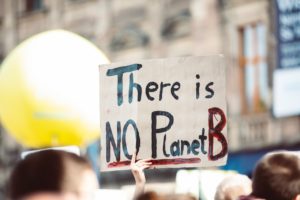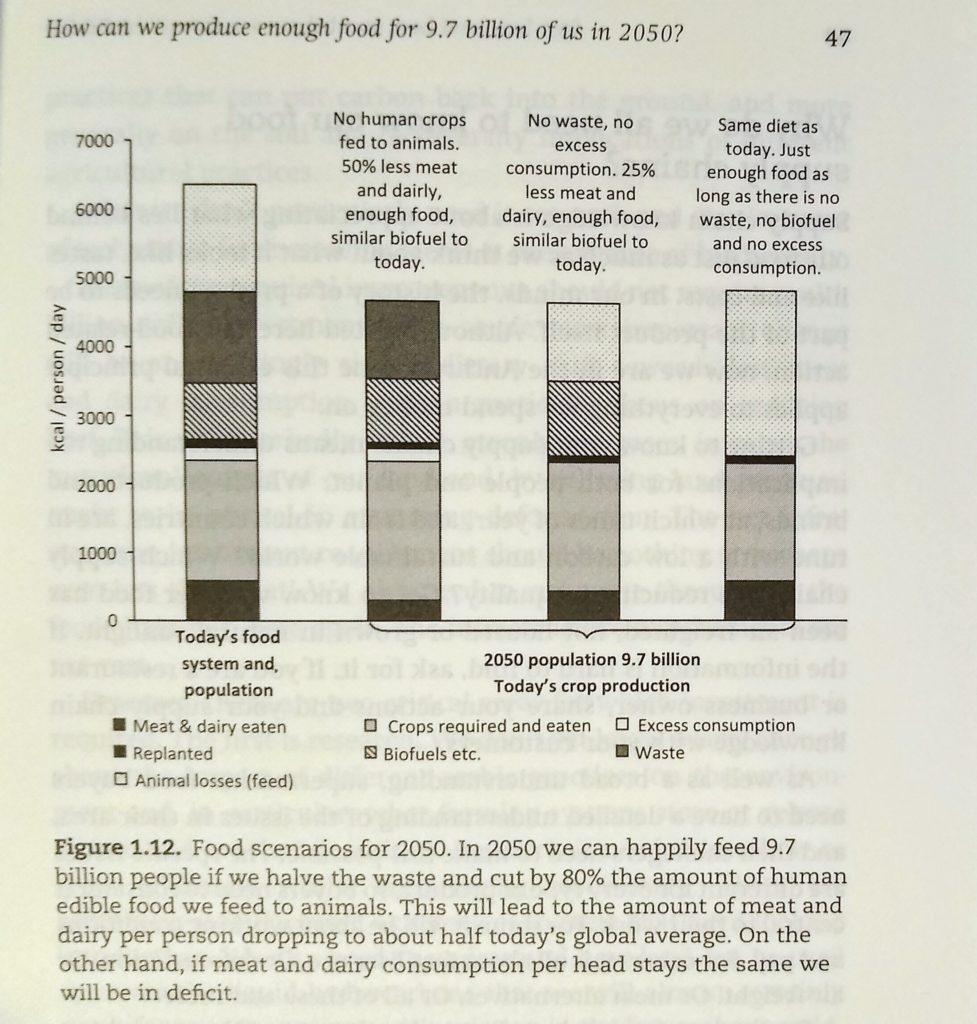
One section that caught my attention was the one on food, its carbon footprint, and having enough to feed the planet.
In one table, it looks at the carbon footprint of different kinds of meat. I think the numbers are for factory farmed meat, and local naturally reared meat will be a bit lower. But what stuck out in my mind is that chicken is the lowest carbon footprint of all the meats, and pork is next lowest. Neither of them chew a cud, and can also usefully be fed on food scraps. Farmed fish is similar to chicken, whereas farmed shell fish is as bad as lamb or mutton, and the footprint for beef is more than double that.
Mike’s comment after all this information is “there is no need for extremism here, just moderation and a broadening of choice.”
This shift alone would mean we have enough land and food production to feed the projected 9.7 billion population in 2050. Less meat and dairy, don’t waste anything or over eat, and don’t feed human food crops to animals.
With that in mind, I’ve been working on changing my shopping and cooking habits.
- For a while we’ve aimed at eating veggie once a week, so now I’ve got used to cooking a few things we like, we aim for eating veggie twice a week. It’s a LOT cheaper, so frees up some pennies for other changes that cost more.
- I’m also trying to serve fish twice a week. We have never been huge seafood fans, but I find we are OK with it. Salmon with cajun is nice, and a tuna steak is lovely though a bit expensive – so we share one steak between two of us. (I have’t yet worked out where to buy it line caught instead of farmed.)
- The rest of the time I’m tending to choose chicken or pork, and smaller portions (we only need 2-3 oz a day). I still buy beef (especially mince, for chilli or bolognese) and if we go out to dinner steak might be a treat, but it’s a lot less often than we used to eat beef. Lamb is also only an occasional treat.
- I’ve found a very good butcher who isn’t too far, and who sells only free-range meat, mainly from this region. So that is so much better than anything factory farmed, both from the perspective of animal welfare and from eating fewer antibiotics. I have a hunch free range must have a lower carbon footprint, but I haven’t found a study on that yet.
Another point I picked up in a later chapter, that sea freight, while being the dirtiest oil, is still the lowest carbon way of moving tonnes of stuff. Air freight is totally bad news for food. So I’ve been trying to buy British where I can – like strawberries – and mostly sticking with fruit that can be shipped by sea like oranges, apples and bananas.
At this point in time, I won’t be turning vegetarian or vegan. But a shift in eating seems essential, to turn the tide of global increase in meat eating (which leads to Amazon clearing), so I’m working on it!
To start your research…
[The previous post was on sugar]
